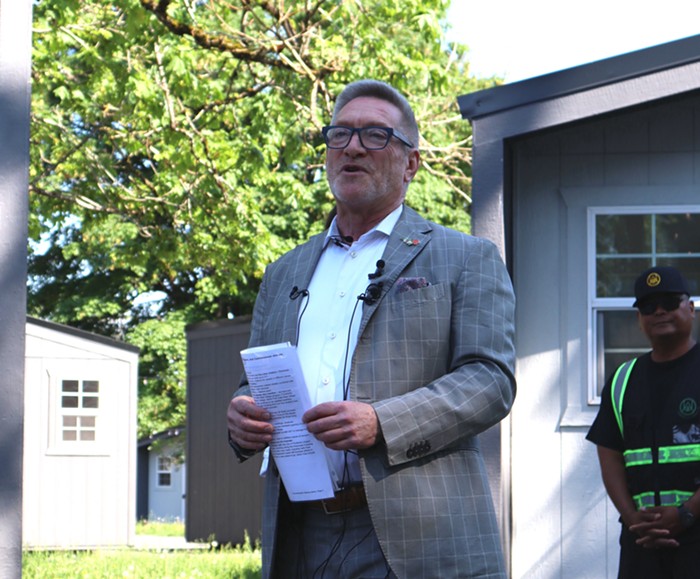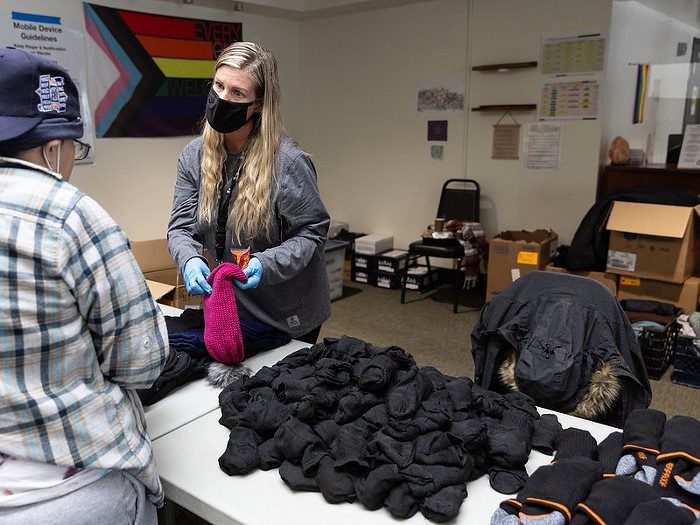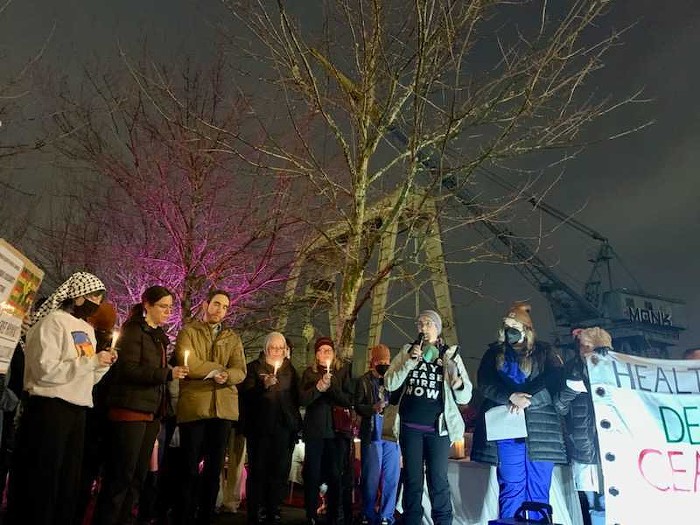
The rules the agency published for public comment were simple: Make over 50 tons of glass a year and use one of six hazardous air pollutants (HAPs)—arsenic, cadmium, chromium, lead, manganese, or nickel—in your raw materials, and the EPA would require filters to limit those poisons to 0.02 pounds of fugitive emissions per ton of glass produced.
In that September 2007 document, the EPA looked at “three sources”—three companies—that would be affected by the rules, and found they would incur minimal “additional capital costs” for new pollution controls. (The EPA identified two of them to the Mercury as a General Electric lighting plant in Conneaut, Ohio and a Corning glass factory in Danville, Virginia.) The required filters would have cut the three glass makers' HAP emissions by almost 98%—from 28.9 tons down to 0.7 tons per year.
And it would have been fairly cheap. On a “cost-to-sales” basis, the EPA estimated the required emission controls—including a $4,320 filing cabinet to park the records in—would amount to 0.66 percent of sales for one operation and 1 percent of sales for the second. For all three manufacturers, the agency declared, “The resulting costs … are relatively small and are not expected to result in a significant market impact whether they are passed on to the purchaser or absorbed by the company.”
It’s not what you’d call a particularly onerous regulation: Filtration experts told the Mercury Bullseye Glass, the Southeast Portland company at the heart of the recent controversy over toxic emissions, could have cut them for an estimated $17,000 to $33,000 per year over the decades-long life of the equipment.
And, as the regulations were initially conceived, the pollution control requirement would have applied to both Bullseye and its North Portland rival, Uroboros Glass. That was until—as revealed by the Oregonian’s Rob Davis—Oregon Department of Environmental Quality (DEQ) air quality regulator Kathy Amidon alerted Bullseye to the alarming prospect of spending a smidgeon to protect its neighbors' health.
Bullseye Controller Eric Durrin fired off a letter that convinced the EPA to back down. Its final rule, issued in December 2007, excused Bullseye from installing filters on the grounds that use of its furnaces was “periodic” rather than “continuous.”
But it's unclear what those terms even mean when referring to glass-melt furnaces like those at Bullseye. After all, a flashing-light alarm at the company goes wild if its furnaces ever drop below 1900 degrees F, according to a former employee the Mercury interviewed.
Glass furnaces, aside from extraordinary maintenance maybe once or twice a year, are heated from the day they're first fired up to the day they 'die' a couple of years later. How such operation would not be considered “continuous,” the EPA has not explained—neither back in 2007 nor when asked about it today.
Nor did the EPA explain why shooting unmitigated cadmium and arsenic and chromium—some of which unavoidably morphs into dangerous hexavalent chromium—out the flue was acceptable as long as it was only done “periodically.”
In fact, the EPA is only now addressing these questions—more than eight years after issuing its final regulations. Asked if a furnace that's heated 24/7 for months at a time is operating continuously, EPA glass manufacturing Compliance Lead Patrick Yellin said, “That's a very good question that we're discussing in-house…. We're trying to figure that out.”
Asked how the matter remained unresolved years after the EPA issued its National Emission Standards, Yellin referred the Mercury to fellow compliance staffer Scott Throwe, who did not reply to several requests for an interview. An EPA spokesperson—who addressed all questions solely by email—wrote, “These issues are part of an ongoing applicability review, therefore we cannot address them at this time.”
The EPA says it’s not currently investigating Bullseye or Uroboros. However, the agency's spokesperson said “EPA is currently determining how the rule applies to this type of operation. Then EPA and the State will evaluate the specifics of each facility to determine if any of their glass furnaces are subject to the rule.”
Bullseye would have been required to put filters on its furnaces—either a baghouse or an electrostatic precipitator—except for the effect, apparently, of Durrin's October 2007 letter to the agency. He claimed the proposed rule would affect numerous businesses, including art glass and stained glass manufacturers, as well as “glass blowers, schools and artisans.” (Bullseye, which according to its report to the DEQ melted 2,449 tons of glass in 2007, perhaps shouldn't be mentioned in the same breath as a school or artisan.)
Durrin's letter to the EPA claimed that “the generally available control technologies for the colored art glass manufacturers are different than those of the large manufacturers.” Yet industry experts have previously told the Mercury that standard pollution control equipment, either electrostatic precipitators or baghouse filters, could be installed at Bullseye.
Durrin also wrote that “colored art glass manufacturers use a variety of management procedures and methods to control the release of HAP chemicals.” If that is indeed true, aside from a baghouse in its raw materials room, Bullseye has not indicated to either the DEQ or its worried neighbors what controls it has in place. And Durrin twice mentioned “the generally available control technologies that are in place,” with no specifics offered.
Finally, there's Durrin's claim that apparently won Bullseye its exemption: “Colored art glass manufacturers generally use periodic furnaces to make a variety of glass formulas at various time within a given furnace.”
He added: “Exclusion of periodic furnaces (versus continuous furnaces) should be added to the proposed rule.”
Lo and behold, when the final rule was published in December 2007, Bullseye was free and clear. As the EPA explained in the Federal Register: “Two of the commenters suggested that the rule exempt small businesses due to the burden that would result from complying with the proposed requirements.”
Referring to the “differences in ... emissions associated with stained glass manufacturing ... the commenter stated that the rule should exempt periodic furnaces.”
The EPA agreed, concluding that the art-glass makers were lumped in with the “relatively large manufacturing plants that operated continuous glass furnaces. Periodic furnaces were not included in the inventory.”
Here’s one problem with that reasoning: A main difference between art glass and big commercial manufacturers is that, to achieve their pretty colors, companies such as Uroboros and Bullseye use far more HAPs per ton of glass than the industrial giants churning out bottles and windows.
The EPA concluded: “Although we conducted an extensive information gathering effort to compile data for developing the proposed [standards], we had little data on the stained glass sector...." And it agreed with one letter writer that any regulations for the Bullseyes of the world "should be based on methods and practices used by that sector to reduce metal HAP emissions.” Yet nowhere are any such methods or practices laid out.
No matter. The EPA plowed on, revising the rule to apply only to continuous furnaces. “In doing so, we believe we have addressed the commenter’s concerns,” the agency wrote.
DEQ parroted the dichotomy between “continuous” and “periodic” in its April 2011 review of Bullseye’s permit. The EPA pollution control requirement, DEQ wrote, “applies only to continuous furnaces. Bullseye operates only periodic furnaces.” And thus a loophole—what Sen. Ron Wyden referred to as a regulatory gap the size of a “lunar crater”—of Bullseye's own creation came full circle.
Bullseye's claim to operating periodic furnaces is contradicted by annual reports to DEQ required by its discharge permit. From 2000 to 2003, the reports state: “Furnaces operate 24 hours a day; they are either 'melting' at 100% firing capacity, or they are 'idling' at 45% firing capacity.”
The next line reads: “Furnace melting hours = 252 days x 24 hours/day = 6048.” So, for five days a week, fifty weeks a year, the furnaces, according to four years of Bullseye reports to DEQ, were operating at “100% firing capacity.”
Beginning with the report for 2004 and continuing through the crucial year 2007 when the EPA was deciding to give Bullseye a pass, there was no mention of the furnaces' operating time. The reports—both those delineating operating time and the later, truncated versions—were signed by Durrin.
Similarly, a 2005 “miscellaneous” report to DEQ on a particular furnace—Bullseye's Tekta glass furnace number 16—states that although it is “batch” rather than “continuous” operation, it operated at a projected maximum of 24 hours per day, 365 days a year.
There’s also more recent evidence of the constant activity at Bullseye. A 2011 DEQ review of the company’s Air Contaminant Discharge Permit indicates the scheduled downtime on various furnaces is “once every two years.” And a DEQ document from 2004 discussing the company's emission limits stated that they're "based on operating 24 hours/day x 365 days/year."
Bullseye declined comment, and DEQ stopped replying to the Mercury's requests for comment last week.
It’s not just documentation suggesting the “periodic” designation is misleading. Other glass companies concede the point.
Back in 2007, the Blenko Glass Company in Milton, West Virginia also sought relief from the EPA filtration requirement. It made no arguments regarding periodic versus continuous furnaces, but rather just asked to be left alone since, “The economic impacts of the rule in its present form on small producers could be severe.” This week, Blenko Vice President Dean Six said, “With minor stop-gaps, yes, they are continuous furnaces.”
Even so, the distinction between “continuous” and “periodic” furnaces exists in the glass world. In fact, one of Bullseye’s competitors wrote the EPA in 2007 with a viewpoint that was starkly different than Durrin’s.
In an email in October of that year, Brandon Byhre, of Seattle’s Spectrum Glass, told EPA officials: “Periodic furnaces, in our experience, actually emit much more particulate and contaminant into the atmosphere than continuous furnaces. Our State Clean Air Agency required that we have baghouses for our periodic furnaces because of the emissions.”
The EPA apparently didn’t find that statement concerning enough to require pollution controls for “periodic” furnaces.
As to Bullseye, one ex-employee who worked there several years said he would periodically raise the issue of vaporized metals going up their stacks. Asking not to be named, he said he brought it up close to a dozen times over the years and actually researched what filtration equipment would cost and presented the figures to Bullseye facilities manager Daren Marshall and co-owner Dan Schwoerer. The ex-employee said he would raise the issue in meetings. Referring to both Schwoerer and other Bullseye managers, he said, “Each time, they'd say, we're following the law. DEQ, OSHA and our insurance company all approve.” Referring to pollution controls, he added, “They said, there's no economic reason to do it. They said they were told it's allowed to go up in the air and disperse in the atmosphere.”
A week after EPA's December 2007 final rule was published, Durrin wrote to the DEQ's Amidon that Bullseye “worked with Susan Fairchild (the technical contact at the EPA)....” And that the agency was “very receptive to our input. The final document works for us.”
Fairchild remains the EPA's glass manufacturing project lead. Several messages seeking comment on her “receptive” work with Bullseye were not returned.
Referring to Amidon herself, Durrin wrote, “Again, thank you for bringing this matter to my attention—your[sic] were the only person in any agency in the US to notify a manufacturer of a potential impact of the EPA regulation changes.”
Asked at a public meeting about the so-called periodic-furnace exemption, DEQ Director Dick Pedersen referred the matter to his staffer Dave Monro, standing nearby. Monro said it was an issue for the EPA to answer.
Both men are leaving DEQ in the near future.
Daniel Forbes is the author of Derail This Train Wreck. He lives in Portland, and can be reached at ddanforbes@aol.com.
MORE COVERAGE:
•State Finds Alarmingly High Arsenic, Cadmium Levels Near Two SE Portland Schools
•Too Cozy? A DEQ Air Quality Official Apparently Vacationed With An Attorney Representing Industry
•Oregon DEQ Director Dick Pedersen Resigns Amid Air Pollution Concerns
•Bullseye Glass Has Suspended Use of Arsenic and Cadmium Because of Air Quality Concerns
•Essential Pollution Controls Lacking at Two Glass Plants Blamed For Cadmium Emissions


















